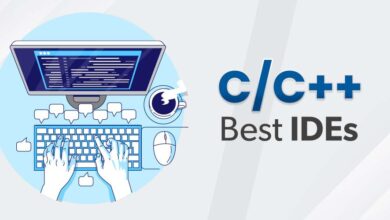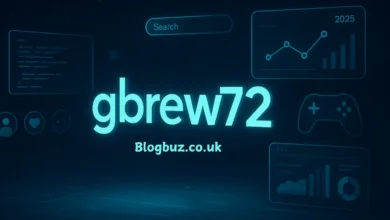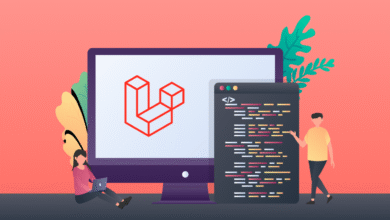Blockchain Funding Strategies: A Comprehensive Playbook for Founders

Fundraising for blockchain startups looks very different from traditional company financing. The core products often depend on decentralized technology, tokens, and community-driven governance, which change both what counts as an investment and the ways capital flows into these ventures.
This guide explores how blockchain funding works, the ways it stands apart from other models, and how fundraising strategies have shifted as the industry has matured. It also digs into how technology, regulations, and investor behavior all shape the funding landscape for crypto and Web3 projects.
If you are a founder approaching blockchain fundraising for the first time, you will find practical comparisons, recent data, and clear explanations of the most important differences between blockchain and traditional funding paths.
Why Blockchain Funding Offers Unique Opportunities
Blockchain fundraising means raising money using instruments designed for blockchain, such as tokens, smart contracts, and decentralized platforms. These innovative blockchain funding strategies allow founders to offer contributors digital assets—which might provide access, governance rights, or a share in future revenue—instead of giving up company shares.
Compared to traditional equity rounds, blockchain models use programmable assets, reach a global audience, and rely on decentralized systems. While equity funding is usually bound by centralized agreements and detailed investor checks, blockchain fundraising often involves public token sales, automated protocols, and transparent on-chain records.
Comparison Table: Traditional Funding vs. Blockchain Funding
| Funding Aspect | Traditional Method | Blockchain Method | Key Advantage |
| Asset Type | Equity or Convertible Notes | Utility Tokens, Governance Tokens, NFTs | Programmable and flexible instruments |
| Investor Access | Accredited Investors, VCs | Global Participants via Exchanges or Protocols | Wider reach and lower entry barriers |
| Fund Distribution | Bank Transfers, Legal Agreements | Smart Contracts, On-Chain Transactions | Real-time execution and transparency |
| Governance Rights | Board Seats, Voting in Corporate Matters | Token-Based Voting, DAO Proposals | Decentralized decision-making |
| Regulatory Oversight | Securities Laws, Private Placement Rules | Varies by Jurisdiction (STOs, DeFi, etc.) | Jurisdiction-specific flexibility |
The rise of blockchain funding began with the ICO boom in 2017, when over $6.3 billion was raised through token sales. The industry quickly experimented with new models like IEOs, STOs, and later, DeFi-enabled fundraising. By 2021, blockchain startups collectively raised around $30 billion, and even with market swings, 2022 mirrored those figures. In the first quarter of 2025, analytics firms reported more than $9.4 billion raised, with early-stage token launches averaging $2 million and major infrastructure projects securing far larger rounds.
Since 2018, regulators have responded by introducing clearer rules. In places like the United States, EU, and parts of Asia-Pacific, digital assets are now often divided into utility tokens and securities, shaping whether a project can run a public sale or must stick to private offerings.
What sets blockchain fundraising apart is its flexibility. Smart contracts can automate how and when funds are released. Token-holding communities can vote on how to spend capital. And liquidity comes from decentralized exchanges, not just acquisitions or IPOs.
Key Token Offering Methods For Founders
When blockchain projects raise funds through token offerings, they grant investors digital tokens that might represent access to a product, voting power, or even a financial stake. The main models include ICOs, STOs, IEOs, and private token offerings. Each comes with its own requirements and regulatory considerations.
1. ICO (Initial Coin Offerings)
In an ICO, a blockchain project sells digital tokens—usually in exchange for popular cryptocurrencies like Ethereum or Bitcoin. This model peaked in 2017, providing a way to raise money without giving up company equity.
The process starts with a white paper that details the project’s purpose, how tokens will work, and a roadmap. Investors buy tokens during a set period, sometimes before a finished product exists.
Success depends on having a compelling use case, well-designed smart contracts, and engaged community support. Many ICOs have struggled or failed, sometimes due to poor planning or regulatory issues.
Founders need to prepare:
- A clear white paper
- A defined tokenomics model
- A public development roadmap
Regulatory risks differ by country. In the US, for example, these tokens may be considered securities, which brings extra requirements.
Pros:
- Open to anyone, anywhere
- No dilution of company shares
- Quick to launch
Cons:
- Regulatory ambiguity
- High rate of project failure
- Limited protections for investors
2. STO (Security Token Offerings)
STOs are token sales regulated as securities. Here, tokens might represent company shares, profit rights, or claims on other assets.
Because these tokens are classified as securities, projects must follow strict legal guidelines. This includes verifying investors, providing full disclosures, and ongoing reporting.
STOs are typically launched under frameworks like Regulation D in the US or MiFID II in the EU. Singapore is also a common jurisdiction for compliant offerings.
Investor benefits include:
- Legal clarity and protection
- Potential for dividends or voting rights
- Ownership recorded on-chain
Costs can be much higher than an ICO due to legal and compliance work. Launching an STO often takes several months or more, depending on the region and complexity.
3. IEO (Initial Exchange Offerings)
An IEO is a token sale managed on a cryptocurrency exchange. The exchange acts as an intermediary, vetting the project and handling the token sale process for its users.
Before approval, exchanges review project documentation, run security audits, and check the background of the team. If the project passes, the exchange handles the sale, collects funds, and distributes tokens.
Criteria for exchange selection might include:
- How developed the project is
- Results from security audits
- Size and activity of the project’s community
IEOs typically involve a listing fee and a percentage of funds raised. Most IEOs raise between $500,000 and $5 million.
After the sale, token performance depends on liquidity and trading activity on the exchange.
4. Private Token Offerings
Private token offerings target a select group of investors before any public sale. This usually means working with venture capital, angel investors, or accredited individuals.
Tokens are often sold at a discount, but buyers agree to vesting schedules or lockups that prevent immediate resale.
Investors must usually prove accreditation, which can mean meeting income or asset requirements.
Key documents include:
- A SAFT (Simple Agreement for Future Tokens)
- A term sheet outlining investment terms
- A formal investment agreement
Vesting can last from six months up to three years, depending on the project’s plan for distributing tokens.
DeFi Based Fundraising And NFTs For Growth
Many blockchain projects now turn to decentralized finance (DeFi) and NFTs to raise capital, avoiding traditional investors or middlemen. These models use smart contracts and token systems to bring in funds, involve the community, and distribute digital assets.
1. DeFi Liquidity Pools
Liquidity pools rely on smart contracts to hold assets and enable decentralized trading. They are a foundation for automated market makers, which let users swap tokens without centralized exchanges or order books.
Founders can create a liquidity pool for their project’s token, often paired with a stablecoin or major cryptocurrency. Supporters deposit funds and may receive incentives like governance tokens or a share of trading fees. This is sometimes called liquidity bootstrapping.
Bonding curves are used to set token prices dynamically based on supply and demand. As more tokens are bought, the price moves along the curve, letting the market find fair value.
Early participants might earn extra tokens through liquidity mining. In return, they take on risks such as price swings or potential vulnerabilities in the smart contract. To manage these risks, projects often use audited protocols, set clear vesting schedules, and put limits on the maximum contribution.
| DEX Platform | Token Standard | Audit Requirement | KYC Needed | Minimum Liquidity |
| Uniswap (Ethereum) | ERC-20 | Optional | No | None |
| PancakeSwap (BSC) | BEP-20 | Optional | No | None |
| Balancer | ERC-20 | Recommended | No | Customizable |
| Curve Finance | ERC-20 | Required for pools | No | Stablecoins only |
2. NFTs And Tokenization
NFTs are unique digital tokens proving ownership of a specific asset or right. Founders use them to tokenize everything from access privileges to shares of revenue.
Membership NFTs, for instance, might give holders early access or voting rights—think of a blockchain learning platform issuing NFTs that unlock premium content or live events.
Some projects issue revenue-sharing NFTs, giving holders a slice of future earnings. A music platform could let NFT holders collect monthly royalties.
Fractionalized NFTs split an asset into fungible pieces, allowing many people to own a share of something valuable, such as art or real estate.
NFTs can be used for:
- Access to products or community features
- Governance, with voting power in DAOs
- Revenue sharing, distributing profits or fees
Legal risks include how NFTs are classified by regulators, intellectual property rights, and tax obligations. These factors differ by country and can affect how NFTs are sold or traded.
Building trust is vital. Projects often share public roadmaps, open-source their code, and stay transparent. Working with artists, developers, and local communities strengthens engagement over time.
Preparing Your Project For Investor Outreach
Before reaching out to investors, blockchain founders need to organize detailed, easy-to-access information about their project. This helps investors judge the technology, the team, the business model, and the project’s long-term potential.
1. Crafting A Data Room
A data room is a secure online space for all the documents investors might want to review. For blockchain startups, this means both standard business files and blockchain-specific resources.
Key items to include:
- Company registration documents
- Tokenomics details and a clear whitepaper
- Smart contract audit reports
- GitHub or other code repositories
- Financial projections and models
- Team biographies and resumes
- Legal agreements, such as SAFTs or NDAs
Good security is important. Use permissions, watermark sensitive files, and have investors sign NDAs. Technical sections should explain how the protocol works, the consensus model, and include smart contract documentation. Team bios should highlight blockchain experience, past projects, and relevant academic or industry backgrounds.
2. Designing A Pitch Deck
A pitch deck presents your project’s story in a handful of slides—typically 12 to 15—and should balance business vision with technical detail.
Core slides often cover:
- What the project does
- The problem and your solution
- How the token works
- The underlying network or technology
- Market size and how you plan to reach it
- Competitors
- Roadmap and milestones
- Team and advisors
- Regulatory strategy
- Fundraising goals and token allocation
Highlight metrics like token velocity, user retention, validator growth, and on-chain activity. Technical sections should explain concepts clearly, avoiding jargon. Anticipate questions about token utility, product-market fit, or regulatory risks.
3. Setting Financial Projections
Blockchain financial models include standard forecasts plus token distribution and blockchain-specific growth measures.
Model options include:
- Fixed supply versus inflationary tokens
- Revenue streams from fees, subscriptions, or staking
- Burn and mint mechanics
- Vesting timelines and liquidity events
Important network statistics:
- Daily active users
- Volume of on-chain transactions
- Growth in validator or node numbers
- Token staking participation
Revenue depends on user activity and network fees. Side-by-side tables can help compare models like fixed-cap tokens, inflationary supplies, or dual-token designs.
| Model Type | Supply Mechanism | Revenue Source | Example Use Case |
| Fixed Supply | Capped token issuance | Transaction fees | Store-of-value tokens |
| Inflationary | Ongoing minting | Staking + inflation | DeFi protocols |
| Dual-token | Utility + governance | Fee + token swaps | Layer-1 networks |
4. Accelerating Fundraising With Outreach Tools
Specialized tools streamline blockchain fundraising and investor engagement. These include databases, event platforms, and CRM systems.
Investor databases let you filter by region, investment size, and sector. Events—both online and in-person—such as Web3 summits or token launch gatherings, help founders network with potential backers. CRM systems help keep track of investor conversations and follow-ups.
Navigating Compliance And KYC AML
Blockchain fundraising is governed by a patchwork of regulations that differ from country to country, and even depend on what type of digital asset you are selling. Founders need to meet both local laws and those in regions where their investors reside.
KYC, or “Know Your Customer,” means verifying user identities, often by collecting legal documents. AML, or “Anti-Money Laundering,” involves checks that prevent illegal use of fundraising platforms. Most regulated offerings, especially public token sales and exchange listings, require both.
Choosing the right jurisdiction shapes how your project is regulated and taxed. Some places provide clear rules, while others restrict or even ban token sales. Here’s how some regions compare:
| Jurisdiction | Regulatory Clarity | KYC Requirements | Tax Implications |
| United States | Moderate to High | Mandatory | Capital gains; strict reporting rules |
| European Union | Moderate | Mandatory (MiCA rules) | Varies by member state |
| Singapore | High | Mandatory | Favorable; income-based |
| Switzerland | High | Mandatory | Token classification affects outcome |
| United Arab Emirates | High | Mandatory | Low to no capital gains tax |
| China | Low (restrictive) | Prohibited | Token sales not permitted |
Compliance tools, such as those from Sumsub or Veriff, automate onboarding, KYC, and AML. Some blockchain platforms also screen wallet addresses and monitor crypto transactions for suspicious activity.
Common mistakes include taking funds from banned regions, skipping identity checks, or mislabeling tokens as utilities when they should be securities. These can bring legal trouble or risk losing access to financial services.
Setting up basic KYC/AML takes two to four weeks, while full legal structuring for a regulated sale can take two to four months and cost anywhere from a few thousand to tens of thousands of dollars.
Hybrid Equity And Token Approaches
Some projects blend traditional equity with blockchain token offerings, aiming to satisfy both kinds of investors. These hybrid structures allow founders to raise capital while offering ownership in the company and a role in the token ecosystem.
One common approach uses a SAFE (Simple Agreement for Future Equity) combined with token rights. Investors receive future equity in the company and also secure access to tokens once the network goes live, often through a special clause or warrant.
Another route involves setting up two legal entities—one issues equity, the other issues tokens. For example, a UK-based company might handle equity, while a Swiss foundation manages token distribution. This dual structure helps with compliance in different countries.
Convertible notes with token rights are also used. These are loans that turn into equity during a later funding round and may grant tokens if certain milestones are met.
Jurisdiction matters here. In the US, token rights in a SAFE might trigger securities rules. In Switzerland or Singapore, dual-entity setups are more common for keeping things clear and compliant.
Investors differ in what they want. Some seek equity for long-term value, others prefer tokens for liquidity. Hybrid models are designed to give both groups what they are looking for.
For instance, in 2023, a European infrastructure startup raised $12 million using a SAFE with token warrants and a dual-entity model. Equity was managed by a UK company, and tokens were released by a Swiss foundation. In Singapore, a DeFi analytics firm used convertible notes with token rights in 2024, tying token release to user adoption and vesting both tokens and equity over time.
Strategic Steps For Cross-Chain Interoperability
Building for cross-chain interoperability opens new doors—projects can reach users across multiple blockchain networks, which can be a big plus for scalability and liquidity. Investors often look at how easily a project can expand to other chains.
1. Evaluating Multiple Blockchains
Choosing where to launch involves comparing layer-1 and layer-2 networks. Each offers its own mix of developer support, transaction costs, and technical features.
| Blockchain | Type | Developer Ecosystem | Transaction Costs | Consensus Model | Common Use Cases |
| Ethereum | Layer-1 | Large | High | Proof of Stake | dApps, DeFi, NFTs |
| Solana | Layer-1 | Growing | Low | Proof of History | Real-time apps, gaming |
| Polkadot | Layer-0 | Moderate | Moderate | Nominated PoS | Cross-chain applications |
| Arbitrum | Layer-2 | Strong (Ethereum-based) | Low | Inherits Ethereum | Scalable DeFi |
| Optimism | Layer-2 | Moderate | Low | Inherits Ethereum | Cost-efficient transactions |
Factors to consider:
- Size and activity of the developer community
- Cost per transaction
- Security record of the network
- Preferences of your target users or investors
Running on several chains increases reach but also adds technical complexity. Some projects start with one chain for simplicity, then expand as they grow.
2. Adapting Smart Contracts
Smart contracts aren’t always portable across blockchains. Ethereum relies on ERC-20 or ERC-721 standards, while Solana uses SPL tokens. Each network differs in storage, execution, and fee models.
Important technical steps:
- Follow standards for each chain (ERC-20, SPL, others)
- Make sure your contracts are compatible with the chosen virtual machine
- Adjust for transaction finality and gas prices
Security audits must be repeated on each target chain. A contract safe on Ethereum could behave differently on Solana, so separate reviews are critical. Teams write, test, and deploy contracts for each chain, using testnets to check for bugs.
Validation typically involves:
- Running tests on contract logic and integrations
- Benchmarking performance
- Simulating cross-chain transactions
- Setting up monitoring tools
3. Ensuring Liquidity Across Networks
Liquidity makes or breaks a token’s usability. Cross-chain projects use bridges to move tokens between networks.
Types of bridges:
- Lock-and-mint systems like Wormhole
- Synthetic asset pools such as Synapse
- Native bridges offered by some protocols (Polygon Bridge, for example)
Liquidity incentives often include yield farming—users earn rewards for providing capital—or liquidity mining, where token holders get paid for supporting trading pairs.
Common strategies:
- Launch token pairs on DEXs across different chains
- Offer extra rewards for early liquidity providers
- Use vesting to manage token supply and reduce volatility
There are risks, too. Bugs in smart contracts or bridges can cause losses, and price manipulation is a constant threat. Risk is managed by using audited protocols, monitoring activity, and sometimes working with market makers to stabilize trading.
DAO Governance And Community Driven Capital
DAOs, or Decentralized Autonomous Organizations, let groups make collective decisions and control treasury funds without a central authority. For fundraising, DAOs use smart contracts, meaning token holders have a direct say in how capital is allocated and managed.
Governance tokens are the backbone. These represent voting rights and influence within the project, giving holders the power to propose, debate, and vote on everything from funding to development priorities. Most DAOs store their funds in multi-signature wallets or smart contracts that only execute transactions after community approval.
1. Understanding DAO Voting
Voting in a DAO depends on governance tokens. They might be earned, bought, or awarded to contributors, and each token usually equals one vote—though some DAOs use more complex systems.
How votes are counted varies:
- Token-weighted voting: More tokens mean more votes
- Quadratic voting: Each extra vote costs more tokens, reducing the dominance of big holders
- Reputation-based voting: Rights are tied to proven contributions or roles
On-chain voting records everything transparently on the blockchain. Off-chain voting often uses forums or snapshot tools, with the final result uploaded to the chain.
Proposal management moves through drafting, feedback, submission, a set voting period, and automated execution if the proposal passes. Smart contracts carry out approved actions automatically, ensuring the process is transparent and tamper-proof.
2. Aligning Stakeholders With Governance Tokens
Governance tokens tie together the interests of users, developers, and investors, giving everyone a voice. As projects mature, they often shift power from founding teams to the wider community through a progressive decentralization roadmap.
Ways governance tokens can create value:
- Sharing protocol fees with token holders
- Buybacks, using project revenue to repurchase tokens
- Staking rewards for locking up tokens
Early investors may get priority for governance rights or allocations, often structured to reward those who stay engaged long-term.
Legal treatment of governance tokens varies. If tokens give holders rights over profits or assets, they might be regulated as securities, so many teams consult legal experts before launching.
Moving Forward With Confidence
Choosing a blockchain funding approach depends on your project’s stage, the kind of asset or token involved, what investors expect, regulatory demands, and technical readiness. Early projects often start with private token rounds or SAFEs with token rights. As they mature, some turn to STOs or hybrid equity-token deals. Others rely on DeFi, NFTs, or even community-driven DAOs.
Success is not just about the total capital raised. Other important measures include how many investor conversations convert, how quickly rounds close, and how engaged the investor base remains after funding—like token retention or ongoing advisory input. For blockchain projects seeking expert guidance through this complex fundraising landscape, specialized fundraising services for blockchain companies can provide the strategic support and industry connections needed to navigate regulatory requirements and secure optimal funding terms.
Timelines vary. Private sales may wrap up in as little as a month, while STOs or other regulated offerings can stretch out to four or five months. DAO or DeFi-based models might launch faster, but require continuous engagement and regular smart contract audits.
Keeping investors updated builds trust. Regular reports, dashboards, community calls, and clear explanations of risks and milestones all help maintain strong relationships and set the stage for future raises.
FAQs
What are the typical costs associated with launching a token offering?
Costs include legal fees for regulatory review, technical spending on smart contracts and audits, marketing expenses for community building, and exchange listing fees. Altogether, these can range from $50,000 to $500,000 depending on the project’s scope and regulatory needs.
How long does the average blockchain fundraising process take from start to finish?
Most blockchain fundraising takes between eight and twenty-four weeks. Private sales and IEOs might finish in one or two months, while STOs and other regulated offerings require longer timelines due to legal and compliance work.
What blockchain ecosystems are currently most attractive to investors?
As of May 2025, Ethereum, Solana, and Layer-2 networks like Arbitrum and Optimism are drawing strong investor interest. These platforms offer active developer communities, robust tooling, and ample liquidity.
How can founders balance regulatory compliance with global fundraising goals?
Founders often work with legal advisors to create structures in crypto-friendly jurisdictions and use frameworks like SAFTs or STO exemptions. This helps align token distribution and investor access with the laws of each country involved.
What percentage of equity or tokens should founders expect to give up in early funding rounds?
Early token rounds typically see 10 to 25 percent of the total token supply allocated to investors, with vesting conditions. For equity deals, early-stage rounds might lead to 10 to 30 percent equity dilution, depending on the valuation and investor terms.




